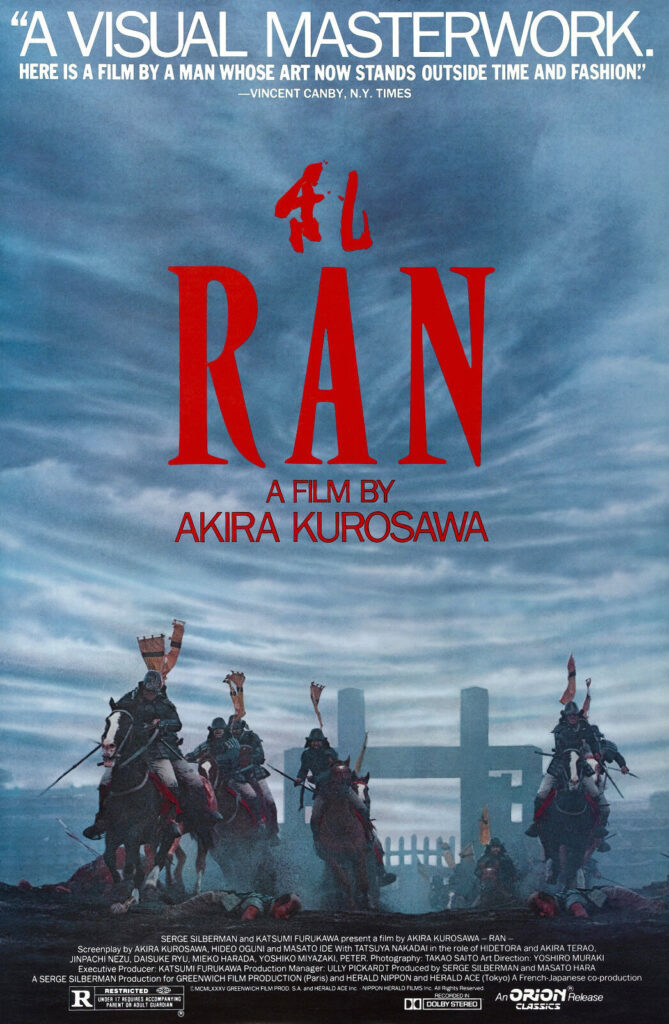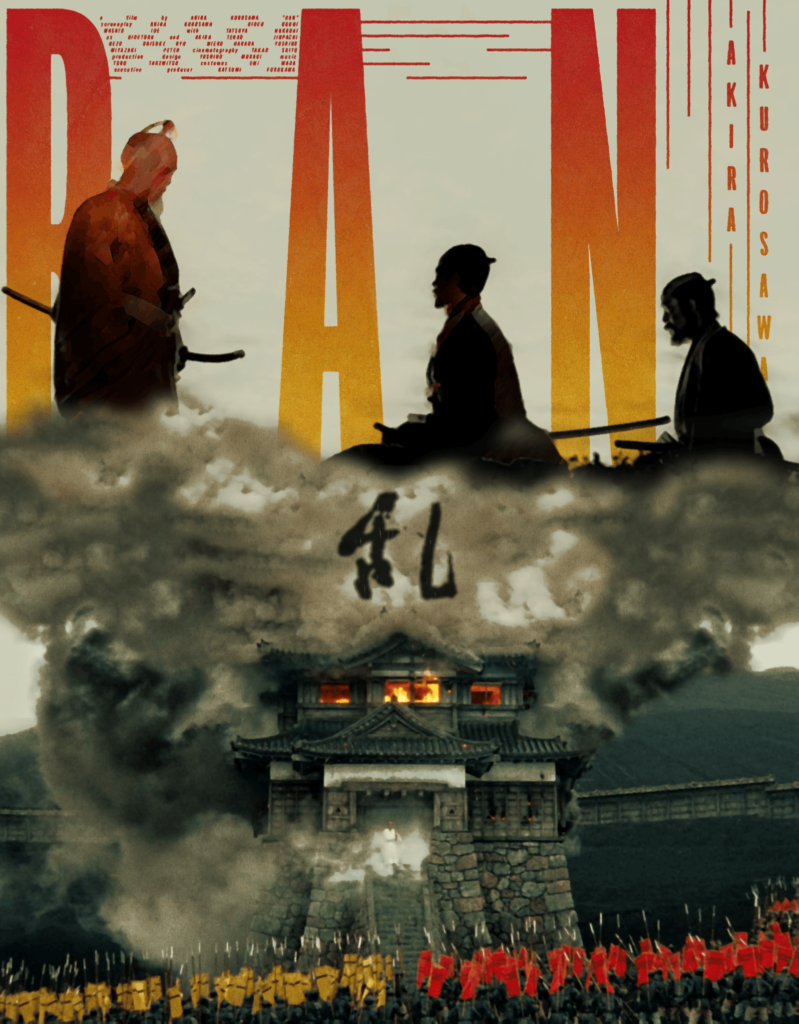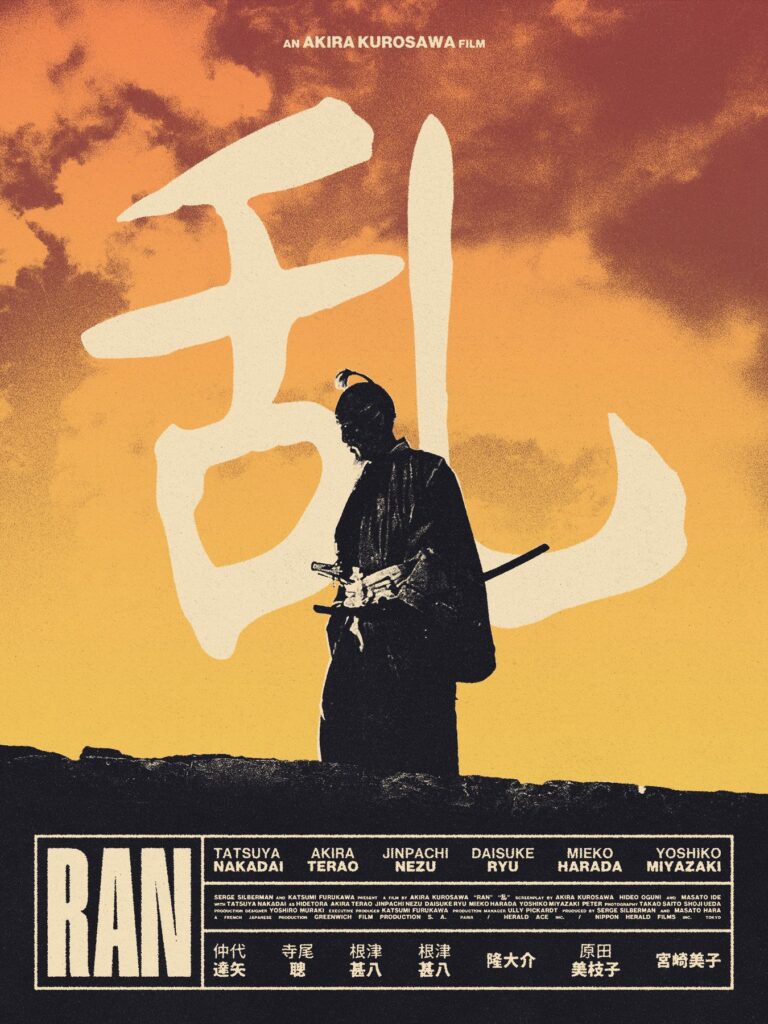
Literally meaning chaos, Ran (1985) – officially the costliest Japanese movie at the time of completion – was designed on a humongous scale. Inspired from Shakespeare’s King Lear, the story loosely linked to Sengoku warrior Mori Motonari is set in 16th Century Japan. Kurosawa conceived this movie when he was passing through a rough patch in his professional career. He saw this magnum opus as his last chance to silence the critics who had already written off ‘Akira Kurosawa’ as a thing of past. With a gestation period spanning a decade, and an extravagant casting involving 1400 extras – each one with customized armors and uniforms – and some 200 horses, the movie was shot at some of the most iconic locations in Japan. While verdant grasslands of Mount Aso swaying under strong winds and haze effectively represented an absolute emptiness, ancient castles of Kumamoto and Himeji symbolized power and authority. Two more elaborate sets were specially constructed for the film, one ruined castle and the another wooden one that was ruined (burnt) as demanded by the script.

Kurosawa painted each and every detail on story-boards, frame-by-frame for over seven years. Kurosawa’s meticulous detailing is evident in every aspect of film-making, literally in each and every frame. The film opens with horse mounted samurai warriors vigorously pursuing wild boars in the carpet lush grasslands. As the royal entourage halts for a break, King Ichimonji Hidetora realizes that time has come to pass on the baton. He divides his empire between his sons Taro, Jiro, and Saburo. His decision gives birth to a state of anarchy as the three sons fight out each other to take control of the whole empire. Color-coded in Red, Yellow and Blue, the dramatic war sequences are shot in a novel way. Kurosawa used three cameras with different focal lengths to bring-in contrasting perspectives; long shots were preferred over close-ups. Jump cuts have been incorporated generously.

Ran was an outright international success; it was nominated in four categories and went on to win the Oscars for Best Costume Design. The movie, certainly amongst the top 3 Kurosawa films in my opinion, connects with the audience not only through its gripping screenplay, but through an impactful pack of never-seen-before images with unparalleled dynamism. Color rendition is outstanding with muted monotones forming the background and sparkling dynamic elements in the foreground. In one frame, we see streaks of blood red erupt out to fill canvases of Grey and Blue, while in the other fire arrows race through smoke to create a spectacular visual drama. At times, we feel so engrossed with specific sequences that loose track other threads of the story. In the last frame, we see Tsurumaru, Lady Sue’s blind brother waiting, unaware of her death. This emotionally charged frame is remains etched for a long time.